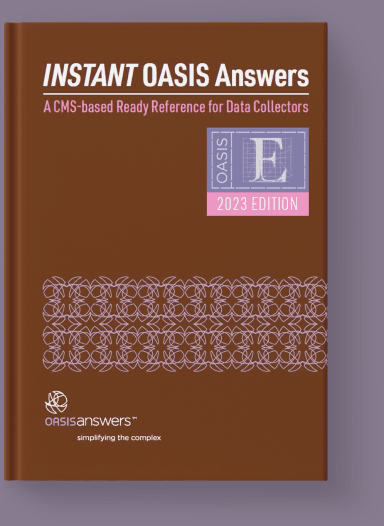by Kerry Termine, DPT, HCS-D, COS-C
What is an unplanned discharge?
Per Q15.3.1 in category 2 of the OASIS static Q&As (OASIS-E Q&As), an unplanned discharge is an OASIS term used to describe situations in which there has been an end to a patient’s home care where no in-home visit can be made. In these instances, the last qualified clinician who saw the patient may complete the discharge comprehensive assessment, including OASIS, based on information from their last visit.
They may supplement the discharge assessment with information documented from patient visits by other agency staff that occurred in the last 5 days that the patient received visits from the agency prior to the unplanned discharge. The “last 5 days that the patient received visits” are defined as the date of the last patient visit, plus the four preceding days.
Why you should care about unplanned discharges?
Unplanned discharges are sometimes unavoidable. Patients suddenly refuse further care, stop responding to an agency’s attempts to reach out, or a doctor unexpectedly sends that patient for outpatient services.
Whatever the reason, an unplanned discharge can leave an agency in a pinch when the last qualified clinician to see the patient is trying to complete a discharge comprehensive assessment with OASIS based off an in-home visit that may have been days or even weeks ago.
In those instances that clinician’s last in-home visit may not account for every OASIS item nor the progress the patient has made on all their quality measures.
Regardless of whether a discharge is planned or unplanned, it will be used for quality measure calculations. It is important for agencies to be aware of and utilize the collaboration window for unplanned discharges to fill in the gaps on their discharge comprehensive assessment including OASIS.
While your last qualified clinician may not have all the information from their last in-home visit that is needed to capture improvement on quality measures or complete all OASIS items, it is possible that information could be collected by collaborating with other agency staff who saw the patient during the last 5 days that the patient received care.
The assessing clinician responsible for completing a discharge OASIS due to an unplanned discharge should be encouraged to collaborate so that they can obtain the most accurate information that is the most reflective of the patient’s status at the time of discharge.
___
Stay up to date on new CMS information related to HHVBP and OASIS accuracy.
- Follow OASIS Answers on Facebook, Instagram, or LinkedIn,
- Sign up for our email list for regular updates and resources








